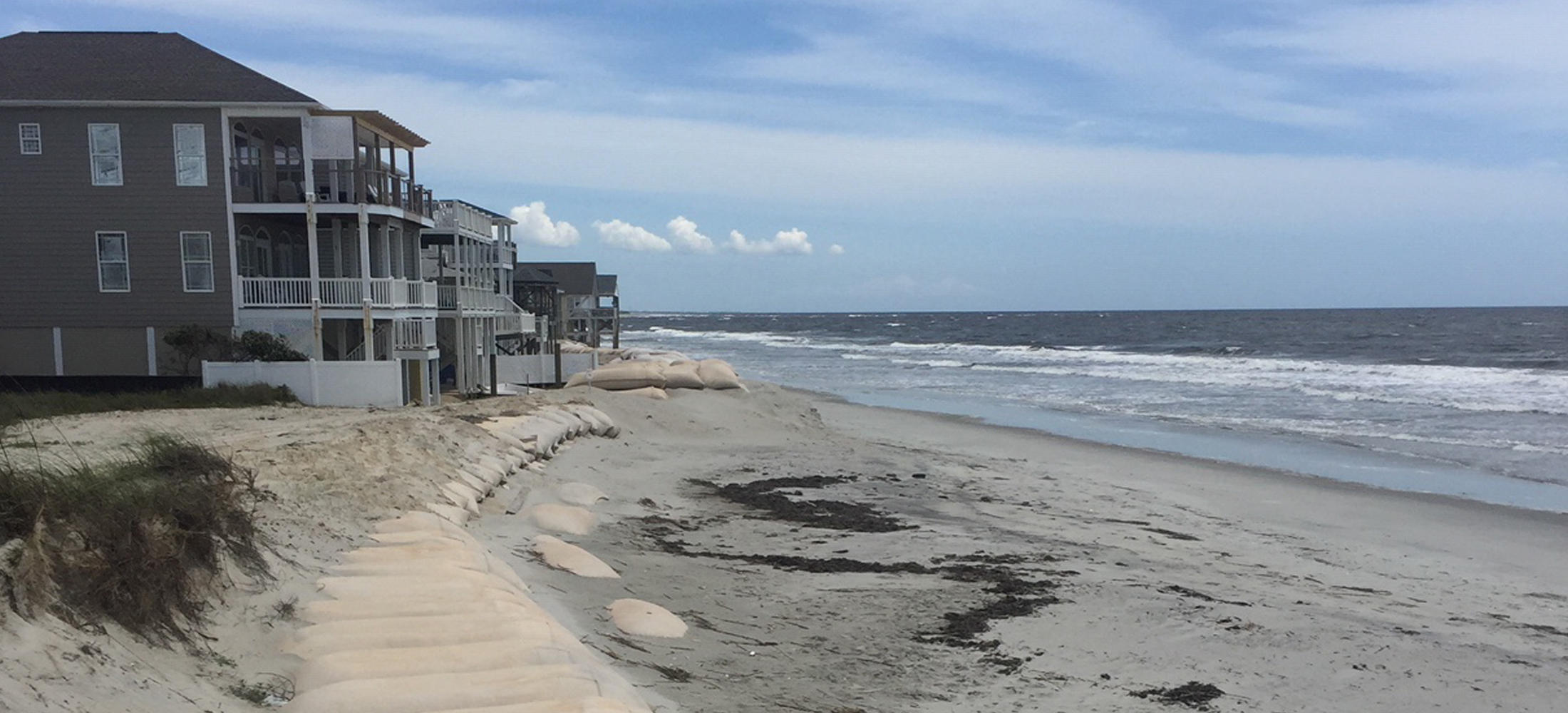Founded in 1902, Audubon North Carolina has experienced many hurricanes and storms over its history. But the impact of Hurricane Florence felt different. Our staff in places like Wilmington were personally impacted by this tragedy and some of the most important places for birds, including Audubon’s bird sanctuaries on the Outer Banks and Lower Cape Fear River were wholly or partially submerged.
While we are still learning the full extent of the devastation that Florence brought, we do know one thing – it is time to change the way we design and live in our coastal communities. We need to adapt to the new reality of warmer seas, rising sea levels, and more dangerous extreme weather events.
In the coming months and years, federal and state lawmakers will be spending billions of dollars to help local communities rebuild and begin to heal from the devastating impacts of Hurricane Florence. Smart investment of these funds can make our coastal communities stronger, save taxpayers money, and rebuild our fisheries, oyster reefs and bird populations that are so critical to local economies, tourism and our way of life. This investment in our future and livelihood should include:
1) Protect remaining open space
Many of the few remaining undeveloped areas on our barrier islands are challenging places to build, susceptible to overwash and erosion during storm events. Unfortunately, existing local, state and federal laws have not kept pace with more frequent storms and rising sea levels, allowing questionable real estate projects to move forward.
Earlier this year, North Carolina regulators approved “The Pointe” real estate development in Ocean Isle Beach that will add 44 new homes on 14 acres of natural dune at the tip of this barrier island. Homes adjacent to this development already depend on sandbags for protection, so it is unfathomable that regulators have approved construction of new homes in an area that will put North Carolinians at risk in future storms. It is time for our state coastal development laws to catch up to the new realities of living in a coastal community and limit development in places that put homes in jeopardy.
An additional way to protect remaining open space is to expand areas conserved under the Coastal Barrier Resources Act (CBRA). This Act is a free-market tool that prohibits wasteful governmental spending of taxpayer dollars on new construction or federal flood insurance in undeveloped, high risk coastal areas designated in the CBRA System. We commend efforts in the U.S. House of Representatives that would add 17,000 additional coastal acres to the CBRA System in storm-prone states, including North and South Carolina, Florida and Delaware.
2) Promote voluntary buyouts that benefit people and wildlife
Those that have spent their lives living on America’s coastline know all too well that the coastal environment is a dynamic, frequently changing place. Unless we intend to spend billions of dollars building sea walls up and down our coast, we must be prepared to adapt to this change by relocating homes and other structures most vulnerable to rising seas, storms, and flooding.
It is much more cost-effective in the long run to purchase vulnerable properties from willing sellers and place permanent public open space easements on newly acquired land than continue to fund costly and recurring beach nourishment projects and the installation/ongoing maintenance of hardened structures like terminal groins. It also offers the potential to create new public beach access and establish new wildlife areas for bird viewing, fishing and other forms of recreation.
3) Avoid hardened structures
In the rush to protect coastal homes threatened by sea level rise and erosion on our barrier islands, some communities along the Atlantic coast have proposed the construction of hardened sea walls, jetties or terminal groins. These massive structures may protect a small number of houses directly adjacent to the wall, but they accelerate sand loss and erosion further down the beach, putting neighboring communities and wildlife habitat at risk.
John Hood of the John Locke Foundation once noted that “While jetties are intended to protect beachfront property from erosion, their operation can result in simply relocating that erosion to other beachfront property. And their construction can result in significant cost to taxpayers, either up front or later when they must be maintained or repaired.” For these reasons, coastal communities like Figure Eight Island and Ocean Isle Beach are increasingly abandoning plans to build hardened sea walls.
4) Protect and restore natural “shock absorbers”
Undeveloped barrier islands, intact wetlands, and healthy maritime forests all act as giant “shock absorbers” that buffer our communities from waves and wind during storms. Natural floodplains, healthy forests along our streams and rivers, and intact grasslands act as giant “sponges” that slow and soak up water/rain runoff during storms and reduce localized flooding.
Lawmakers should increase funding to North Carolina’s three conservation trust funds and the federal Land and Water Conservation Fund to ensure protection and restoration of important natural infrastructure across the state. In addition, federal investments to restore our coasts should include funding for projects like the Currituck Sound marsh restoration project in North Carolina, the Blackwater climate adaption project in Maryland, and others highlighted in Audubon’s Natural Infrastructure Report that protect birds and the habitats and communities they need to survive.
How federal and state funds are spent will shape North Carolina’s coast for generations to come. North Carolina can lead the nation in smart and cost-effective coastal development that protects people, birds and other wildlife.
Greg Andeck is the Director of Government Relations for Audubon North Carolina
Karen Hyun is Vice President, Coastal Conservation for National Audubon Society




